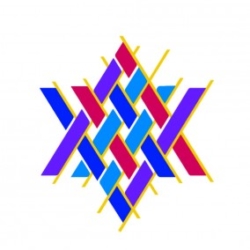the Open Siddur Project ✍︎ פְּרוֹיֶּקט הַסִּדּוּר הַפָּתוּחַ
a community-grown, libre Open Access archive of Jewish prayer and liturgical resources
This project is sustained through reciprocity for those sharing prayers and crafting their own prayerbooks.
Get Involved ✶ Upload Work ✶ Donate ✶ Giftshop בסיעתא דשמיא |
☰︎ Menu | 🔍︎
Search // Main //
⋯ Miscellanea (Ketubot, Art, Essays on Prayer, &c.) // Meta // Open Siddur Project // Essays
Essays On the Open Siddur Project: A Brochure Presented at the Academy for Jewish Religion’s Spring Intensive 2010This journey really started with my time spent with the myriad of other folk who prepared for and showed up at Jews in the Woods gatherings. It was at one such retreat at the old Eilat Chayyim in upstate New York that I met Dan Sieradski who had worked on his own Open Source Siddur project and who afterward invited me to the advisory board of what was then called Matzat and which might now be called Jew-It-Yourself. I promised him that the siddur we would develop would be an important feature of the larger constellation of resources we were imagining, resources all complementary due to our use of free and open source licensing. . . . For a relationship as intimate as that with one’s own spirit, we might assume that the only spiritual tools provided to individuals have this degree of personalization, but this of course, is not so. Printed siddurim were designed with other goals in mind. As a technology the siddur only became widely adopted by the Jewish public in the mid-19th century. Printers of siddurim have designed their siddurim to appeal to mass markets, each edition of the siddur representing a specific communal custom, and when translated, the specific language of a community. It’s no surprise then that for many Jews their spiritual identity is closely mapped to the liturgical variations represented by their Siddurim. . . . One question I’ve been asked a number of times about the Open Siddur Project is: why are you developing all that software? It’s a fair question. After all, the siddur is just text. There are other do-it-yourself siddur kits out there. They sell you (or, more accurately, license you) a text. You open the text in a word processor, make a few stylistic changes, and voila, you have your own custom siddur. The “advanced” ones may even hand you one copy of a “nusaḥ Ashkenaz” siddur, one copy of a “nusaḥ Sefard” siddur, and one copy of a “nusaḥ Edot Hamizrah” siddur, giving you some choices. All good, right? So, once again, why does the Open Siddur need so much software? . . . Giving an individual a choice of how verses that are tripping them up are translated, or even how the ineffable name, YHVH, and other divine names in Hebrew are represented in a siddur, can make a difference in their experience of t’fillah (prayer) for someone engaging in individual or communal prayer. Giving someone a place to share their personally authored t’fillot, meditation or commentary, or else collaborate on a translation of a medieval piyut (liturgical poem) can connect Jews to each other in a meaningful way where before they were isolated in their passion and earnest devotion. Providing historical data revealing the siddur as an aggregate of thousands of years of creatively inspired texts can help a Jew understand that their creativity and contribution is also important in this enduring conversation. . . . The Open Siddur is an online tool for individuals and groups to craft the siddur they’ve always wanted. The Open Siddur will provide content (translations, transliterations, art, tfillot, piyutim, and other source texts) from an archive of current and historic nusḥaot (both well-known and obscure) and enable users to adapt, contribute new content, and share the siddurim they’ve generated. Partnerships with on-demand printers enable users to print beautiful copies of their personally customized siddurim and machzorim. The Open Siddur benefits independent minyanim and trans-denominational communities, pluralistic institutions, teachers of Jewish liturgy, and Jews of all ages evolving their personal use of t’fillah in their own daily practice, both alone and within groups. . . . One of the enduring challenges of the Open Siddur has been acquiring digitized siddur content that is in the public domain (or which is at least distributed with a, Open Content copyleft license such as CC BY-SA). Our greatest advance so far been attaining a digitized Public Domain text of the Leningrad Codex of the TaNaKh (in XML). . . . |




